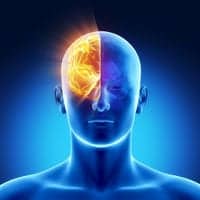Congress is expected to take up legislation this summer aimed at improving the nation’s health care system. Whatever the shape of the final bill, it will have at least some impact on one of the three leading causes of death in the United States.: stroke, according to a [removed]statement [/removed]released by the American Physiological Society (APS), Bethesda, Md.
Stroke affects male and female brains differently although scientists are not sure why, says APS.
To discuss the current state of gender research and stroke, Patricia Hurn, a renowned expert in stroke and sex differences, and professor and vice chair for research in the Department of Anesthesiology and Perioperative Medicine at Oregon Health and Science University (OHSU) School of Medicine, will address attendees at the Sex Steroids and Gender in Cardiovascular-Renal Physiology and Pathophysiology conference, being held July 15 to 18, 2009. The program, sponsored by the APS, attracts scientists in the field of gender biology, physiology, medicine, and related fields.
While males and females are at risk for stroke, males have a particular sensitivity, says APS in the statement. Data show that male stroke victims outnumber females by about two to one—and actor Kirk Douglas, Cuban leader Fidel Castro, and singer Barry White are among high profile men who have suffered a stroke, says APS.
Women are likewise at risk for stroke and, as they age, their outcomes are often worse than their male counterpart’s, according to APS. Hurn says she believes the outcomes phenomenon may be because women are typically older than men when a stroke occurs, says APS.
In terms of stroke treatment, men again have a disadvantage. For example, tissue plasminogen activator (tPA), the only drug therapy approved by the FDA for stroke treatment, has been shown to improve stroke outcome and generate brain damage response in women but to a lesser extent in men, says APS. And even at the smallest level of new discovery— the molecular and cellular level—male and female dish cultures respond differently, according to the statement.
Since females carry the sex hormone estrogen researchers have long examined whether it protects the XY brain and thus shields it from stroke’s injury and damage. Large scale and in-depth studies of animals have shown that there is a protective effect for animals, but results in human studies have been less conclusive, says APS.
In the government’s largest study involving estrogen and cardiovascular disease, known as the Women’s Health Initiative (WHI), researchers found a small detrimental risk of stroke among the women taking estrogen, says APS. Whether the risk was an anomaly due to the study parameters is not yet clear. In the meantime the effect of estrogen remains an unexplained variable in the effort to understand stroke, says APS.
Researchers have focused on the effect of estrogen for more than 15 years. With no apparent conclusion at hand, Hurn and her colleagues have shifted their investigative focus to the influence of testosterone, the primary male hormone, in stroke, says APS. Hurn notes in the statement: We think this approach, coupled with examining brain stroke injury at the molecular and cellular level, is the best way to get at some of the underlying issues that have challenged us scientists for so long.”
The differences between male and female stroke may put women at a greater disadvantages than men in terms of their health outcomes, says APS.
[Source: [removed]The American Physiological Society[/removed]]




